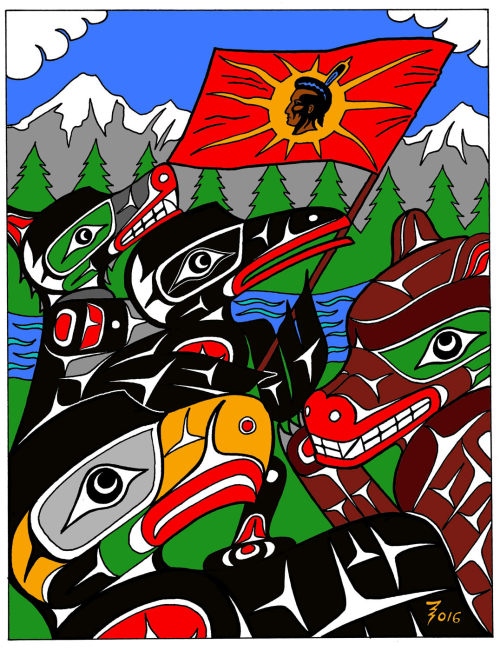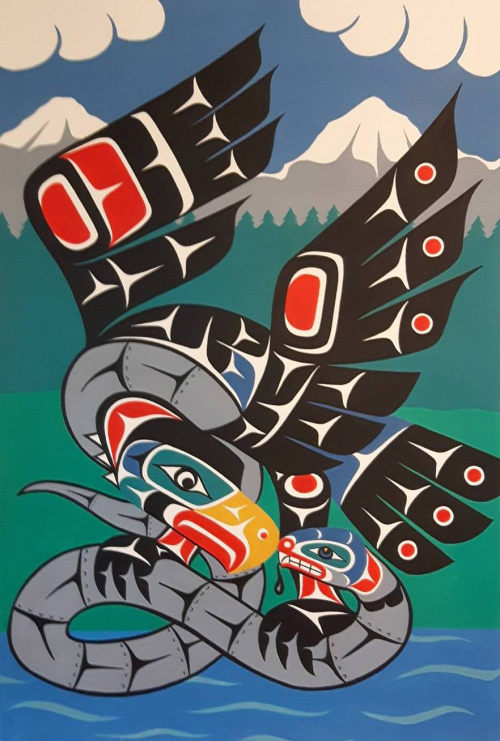argyrocratie:localareamom: (via CrimethInc. : Gord Hill, Indigenous Artist and Anarchist : An Inte
argyrocratie: localareamom: (via CrimethInc. : Gord Hill, Indigenous Artist and Anarchist : An Interview) The struggle against the Dakota Access Pipeline at Standing Rock is arguably the most prominent struggle for indigenous sovereignty we’ve seen in recent times. Do you think there are important philosophical or tactical lessons to be taken from how this struggle has played out? Yes, I would say the NoDAPL campaign was very important for a variety of reasons. While there have been a number of anti-pipeline campaigns in Canada, and in particular in BC, it was the first real struggle against a proposed pipeline to occur as construction began. In Canada, the proposed Enbridge Northern Gateway pipeline was eventually abandoned after several years of Indigenous resistance. At the Unis’tot’en camp, it doesn’t appear that the proposed natural gas pipeline has attempted to build on Unis’tot’en land. So the NoDAPL campaign was the first one to actively resist construction of a pipeline. I think especially for Natives in the US, the NoDAPL campaign was very important, and I’m sure thousands of Native youth were radicalized in some way by participating in it.
Ultimately, however, the NoDAPL campaign failed. I would suggest this occurred for a number of reasons, the primary one being that the opposition, despite some militant actions that occurred, was primarily based on “non-violent civil disobedience” and pacifist methods. Any attempts at creating a diversity of tactics were largely squashed by the NGO-type organizers that dominated the debates on tactics, combined with the lack of experience among members of the Standing Rock reservation. In contrast, I like to point out the resistance carried out by the Mi’kmaq in New Brunswick in 2013 against exploratory work for fracking operations. They didn’t have thousands of people gather, didn’t have big name celebrities join in, and didn’t have tens of thousands of dollars at their disposal. They mobilized their community and after a brief attempt at non-violent civil disobedience, they carried out more militant actions including sabotage and road blockades. Their main blockade was cleared out by police in October 2013, which resulted in six police cars being torched; afterwards, they used more mobile tire fire blockades to disrupt the exploratory work. Eventually, the company, SWN Resources, pulled out before completing all their work, and the next year a provincial election was held that saw the pro-fracking government thrown out of power in what was seen as a plebiscite on fracking. The new government enacted a moratorium on fracking. The Mi’kmaq, even though they were much smaller in numbers than what we saw at Standing Rock, and with far less resources, were victorious. In looking at the two campaigns, there are many lessons to be learned, and I would caution against people hoping to replicate the Standing Rock model because, ultimately, it was defeated. -- source link
Tumblr Blog : localareamom.tumblr.com



